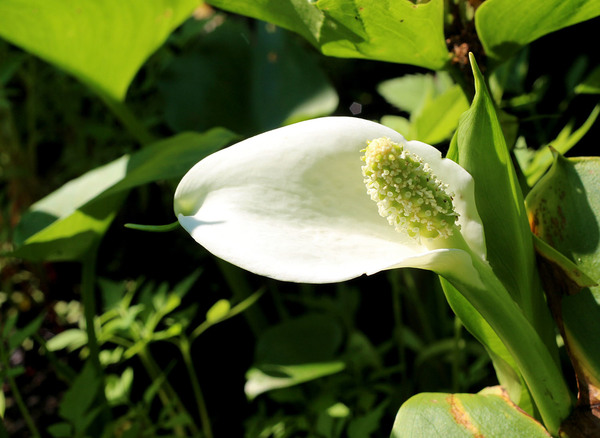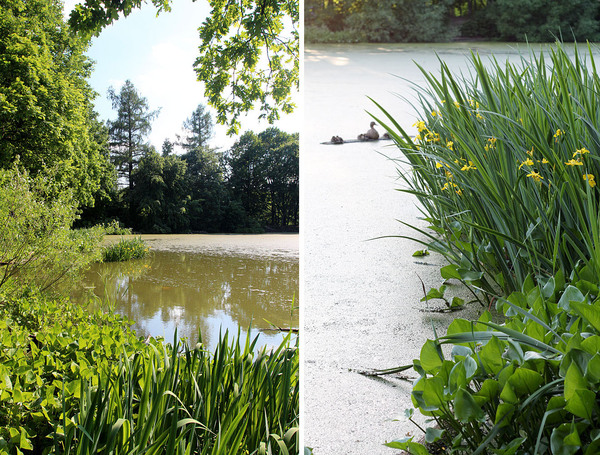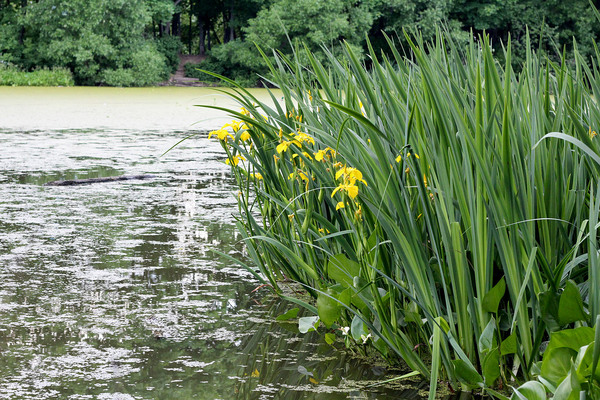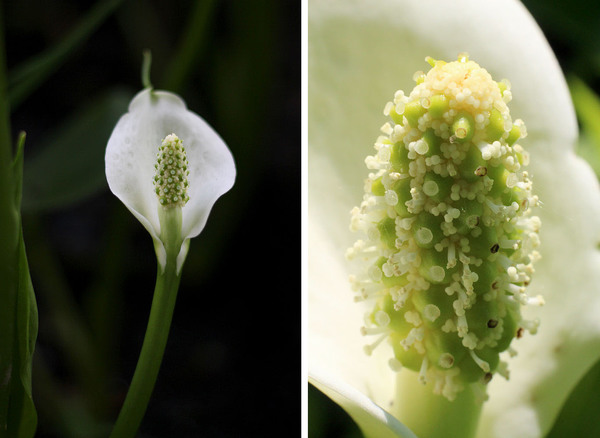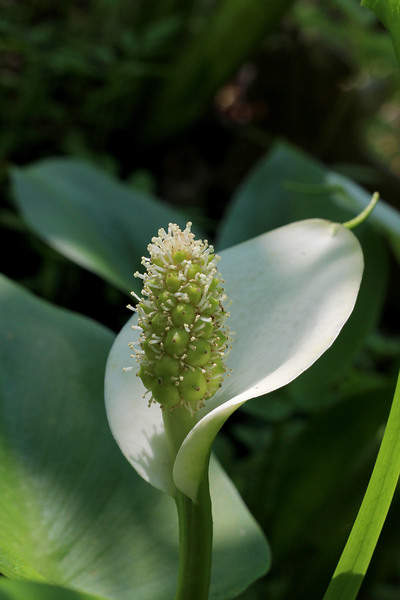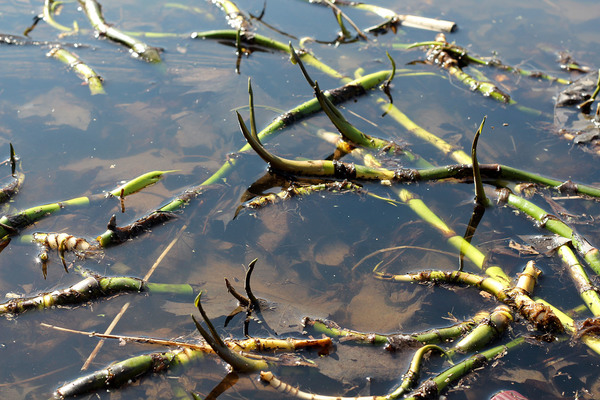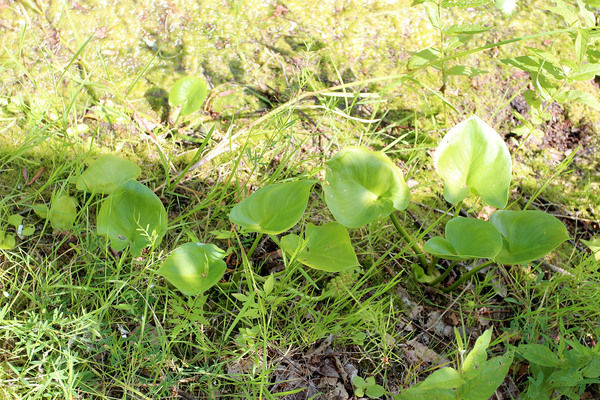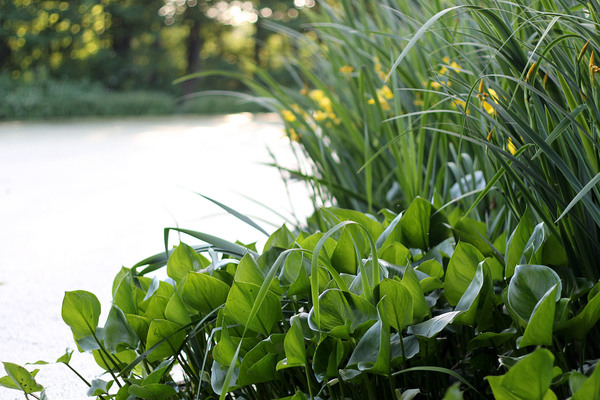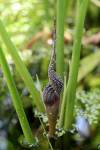White sails of Russian swamps
Waiting is a very strange feeling. Even the waiting for happiness is sometimes extremely painful. Time stops, the hands of the clock slow down, and the soul is torn in an effort to speed up the oncoming of the happy moment. Some plants, like humans, are not immune to this feeling. Today, the hero of my story will be an inhabitant of the northern latitudes, the most frost-resistant representative of the Aroid family – the Water Arum (Calla palustris, Fig. 1). This plant has only one, but a very serious opponent – the low ambient temperature.
Figure 1. The inflorescence of the Water Arum (Calla palustris) has a white spatha, which resembles the sail of a ship.
Waiting. The Water Arum waits for spring. Waits to find its happiness. And nothing can prevent it from achieving this goal, neither May frosts, nor excessive floods. Warm days will inevitably come, the snow will melt, and the white sails of Calla will curl over the swamps of central Russia.
I have been trying to find this plant in its natural habitat for a long time. Angling in various water bodies of Russia, I carefully peered into the riverside zone. However, failures haunted me one after another. Yellow water lilies (Nuphar lutea), water soldiers (Stratiotes aloides), arrowheads (Sagittaria sagittifolia), yellow flags (Iris pseudacorus), various pondweeds (Potamogeton sp.) are widespread in the basins of the Volga, the Oka, the Don, the Vyatka and other rivers. Sandy or loamy banks in these places have apparently an insufficient nutrient base for the vegetation of Calla, which prefers wetlands with a large amount of organic humus. All in all, large populations of the desired plant were found in numerous ponds and swamps located along the Bitza River in Moscow (Figs. 2 and 3). The physical proximity allowed me to observe the Calla during its entire development cycle.
Figure 2. The Water Arum (Calla palustris) in a pond located near the Yasenevo estate in Moscow.
Figure 3. The yellow flag (Iris pseudacorus) is another inhabitant of the pond.
In the Aroid family, there is a large number of species with a seasonal development cycle. However, as a rule, this seasonal occurrence is associated with a long period of drought. The Water Arum is unique because it is the only representative that can survive quite hard winters with negative air temperatures for several months. The most part of the year, it spends under the snow cover in the form of rhizomes up to several tens of centimeters in length and about 1-1.5 cm in diameter. In the region I studied, active growth of Calla begins in early May, and by the end of the month the plant is already blooming. The inflorescences have a small (4-5 cm) white spatha, which looks graceful against the background of the fleshy dark green leaves. The flowers on the spadix are bisexual (each ovary is surrounded by several stamens, Figs. 4 and 5). The structure of the inflorescence is very similar to representatives of the genus Spathiphyllum. It is worth noting that in decorative floriculture, African Zantedeschia, which have differentiated flowers of different sexes, are also usually called Callas. In fact, the genus Calla is monotypic, and the Water Arum is its only representative. Despite the small size and unattractiveness of the inflorescences, the domestic Calla is also often used as an ornamental plant in the design of private ponds. Groups of plants with numerous inflorescences, growing in semi-submerged state, resemble a squadron of sailing ships.
Figure 4. The inflorescence of the Water Arum (Calla palustris) at various stages of anthesis.
Figure 5. The fruit of the Water Arum (Calla palustris) at the beginning of its development. The stigmas dried up, and the ovaries began to increase in size.
The flowering period of Calla ends by mid-June, after which a slow general wilting of the plant begins. The leaves gradually turn yellow and die. Being the inhabitant of the half-shade, the hydrophyte burns out under the hot July sun. Despite this, its rhizome is still firmly “pinned” to the ground with small roots. One cannot tear it off! It was even more surprising to observe a completely different picture that appeared to my eyes in early May immediately after the snow melted - along with a horde of frogs that woke up after hibernation, the green Calla rhizomes floated on the surface of the pond (Fig. 6). There were not any roots, and only the opening apical points indicated that these were not just green branches, but messengers of the future, fleeting, but bright life. It is obvious that the floating rhizomes play a huge role in the expansion of more and more new areas for life by Calla, and ensure the preservation of the existing population. In stagnant water, the rhizomes, after surfacing, are washed by the wind to the bank, where they take root. The stronger the spring flood, the greater part of the river-side zone will be populated by Calla. According to the literature data, the seeds of the plant also have similar floating qualities.
Figure 6. With the spring flood, the rhizomes of the Water Arum (Calla palustris) emerge and slowly drift along the surface of the pond at the behest of the wind.
In addition to the above, it should also be noted that Calla, like most aroid plants, is poisonous. The alkaloids contained in its tissues cause severe poisoning in cattle. Thus, in the process of evolution over many millions of years, the plant has developed many protective mechanisms that allow it to survive in the difficult conditions of the modern world. The Water Arum is a staunch fighter for his happiness, able to survive any adversity. Moreover, these tests are vital for the plant. All my attempts to add Calla to indoor plants on a glazed balcony ended in failure. At an ambient temperature of more than +20 °C, Calla was losing ground every week - the old leaves died off, and the new ones became smaller. In the spring, the rhizome gave out the last tortured leaf, and its strength was no longer enough for something more. The plant needed its typical dormant period.
My Calla also did not like the country pond (Fig. 7). The specimens planted on the loamy bank lost most of their biomass over the summer. The absence of humus affected the growth of the plant fatally.
Figure 7. Calla bushes planted in the country pond. However, no one specimen was found in the next year.
Therefore, all the observations speak for rather weak adaptive qualities of the Water Arum. The plant with a strong-willed character turned out to be very sensitive to any changes in the usual way of life, so, in order to make it happy in artificial conditions, it will take a lot of effort. Like humans, Calla’s formula for happiness is not so simple. In conclusion, I will give the water parameters in the natural biotope of the Water Arum (a pond located near the Yasenevo estate in Moscow, Fig. 8): pH = 6.0-6.1, TDS = 25 ppm. I wish you to find your happiness without failure and never give up on the way to it, because otherwise life loses its meaning...
Figure 8. The Water Arum (Calla palustris) never gives up on the way to its happiness.
